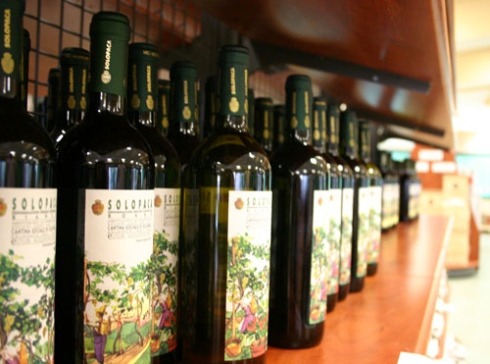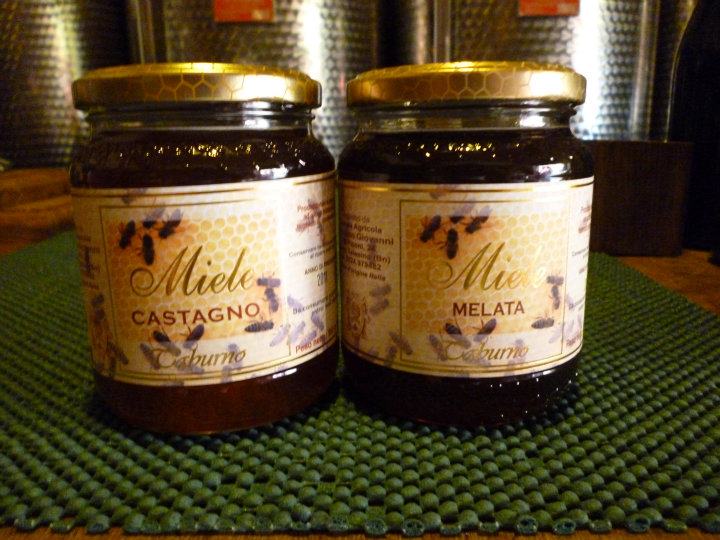
There is a corner of Campania that is far from the sea, the noise and mass tourism. It is a more secluded corner, which some people like to call “earthy”.
Benevento is the capital of an area called Sannio, which is also known as the land of Witches. The tales of magical cults and of “Janare” (witches) that gathered around a walnut tree, were well known to all the people who settled in the territory. The myth goes back to the modern era, 1860 to be precise, the year of birth of Liquore Strega (Witch liqueur), whose recipe is magically secret. The Strega factory produces not only liqueur but also nougat, and their worldwide fame shows exactly the importance of food and wine tourism for the economy of Sannio.
There are many festivals that – especially during the autumn season -allow visitors to taste typical products of the area: the Annurca apple, caciocavallo (produced in Castelfranco), sheep meat (produced in Lauticauda) cold cuts, wild boar (Festival of Dugenta), mushrooms ( Festival of Cusano Mutri). But the king of this kind of tourism is, obviously, wine, whose production in Campania has its roots in ancient times.

Campania is a region that boasts an ancient wine-making tradition and a territory among the first centres of settlement, cultivation and study of vine and wine in the world.
The vine, brought to Campania by the Phoenicians and Greeks, has found in Sannio an ideal climatic context. Among the white grape varieties, the most common is certainly Falanghina. The large berries ripen between the end of September and the beginning of October.
And Falanghina is the main ingredient of the chocolates that I receive, by chance, one autumn morning. There is one detail that immediately attracts my attention: it has been wrapped with a ribbon and there’s a cardboard written in golden letters. It is about the story of Solopaca, a small town near Benevento. The origin of its name is still a mystery. Someone believes that it means “sub pagus” (it means “at the bottom of Taburno mountain”). Someone else thinks it means “Sol opacus“, that is opaque sun.
The origin is very ancient, and the first finds date back to prehistoric times. The old town centre is of Norman age. From the 16th to the 18th century it was ruled by the Cava – Grimaldi, a feudal family. Their Duchy Mansion is still a beautiful exemple of feudal architecture. Not far from the inhabited centre, on the banks of the river Calore, you can see the remains of the Maria Cristina Bridge, built by Ferdinand II.

The uncertain etymology of the name Solopaca, or the sweetness of Falanghina chocolate intrigues me to such an extent that I am convinced to visit the place as soon as the opportunity arises.
And the occasion is not a long time to arrive: the Cantina Sociale di Solopaca, in mid-November, organises a guided tour of the coopers, with a subsequent tasting of bottled wines and dinner.
We arrive at 5 p.m and we park our car in the yard in front of the Cantina di Solopaca. It’s already dark but the area is well lit. The steel silos, The steel silos, like towers, seem to want to touch the sky. The air is pungent.
The president of Cantina Sociale welcomes us in the commercial area. He explains that the equiment has been recently renewed and the Cantina Sociale aims to export its products. They produce not only wine, but also honey, chestnuts and much more. My friend- who stubbornly follows me in wine tours even if he is a teetotalic- is happy to realise that we will not only drink but also eat!

At 6 p.m other visitors join us; we are ready for a guided tour of the winery! The president shows us the cellar and allows us to taste two different kinds of wine. The first one is an Aglianico, intended for bottling and sale within the year. The second one is Aglianico too, but it will mature in the barrels for three years before being bottled.
Our guide explains that letting the wine mature for three years in cask can be risky, since any deterioration of the wood can also alter the wine. For this reason the wine will have a higher cost.
After taking some pictures, we move upstairs to taste three wines from Campania. The tasting will be guided by a famous sommelier.
Among the proposals, the Falanghina spumante stands out, which comes from the pure vinification of Falanghina. Its color is pale yellow, its foam is persistent, its scent is delicate.
Then we taste the Barbera of Sannio, ruby red, intensely fruity, with an aromatic and dry flavour.
Finally, we taste Fiano, one of the oldest varieties in Campania. Its colour is pale yellow and its scent is fruity.
Once this formative moment is over, the real party begins!
 The large hall on the first floor has a festive decoration and a beautiful sculpture of ice and fruit dominates at the bottom.
The large hall on the first floor has a festive decoration and a beautiful sculpture of ice and fruit dominates at the bottom.
Participants are served typical cheeses, polenta, sausage, chestnuts and, wine. . . of course! Wine is the actual protagonist of the evening!
We really linke the restyling of the Cantina Sociale di Solopaca, founded in 1966 by 25 farmers. 50 years later, it produces 150.000 hectolitres. Bottles are sold in Italy and exported abroad, from England to Russia.
The farms of the wine-growers who are members of the winery are now 600 and are located not only in the municipality of Solopaca, but in 16 towns of the Sannio area. This area produces 49% of the wine of Campania. The wine from Sannio is not as famous as the one produced in other areas of Campania, but the number of its fans is growing.
“Cantine Aperte a San Martino” (Open cellars in St.Martin’s Day) has been very successful, so every year people have the opportunity to visit the Cantina Sociale of Solopaca and taste its products.
The Cantina Sociale takes part, obviously, in the Grape Festival, which is repeated every year in September. The event attracts tourists from all over Italy. The inhabitants of Solopaca create real works of art: floats decorated with grape. During the last edition, the float inspired by Spongebob stood out for its originality. The characters were faithfully reconstructed using grape berries. But the predominant theme of the event was Campania. There were reproductions of Royal Palace of Caserta, the royal park, Mount Vesuvius and the football stadium.
In addition to the floats, the inhabitants of Solopaca paraded wearing period costumes that recalled the Cava-Grimaldi family, lords of Solopaca.
Last, but not least, the local summer wine festival Calici di Stelle is an event you can’t miss.
Copyright foto 1: origineonline.it
Copyright foto 2: lucianopignataro.it
Copyright foto 3 e 4: Anna Visconti
Article written by: A. Visconti

